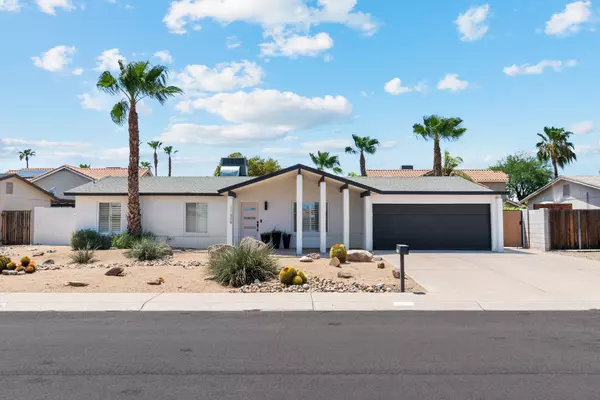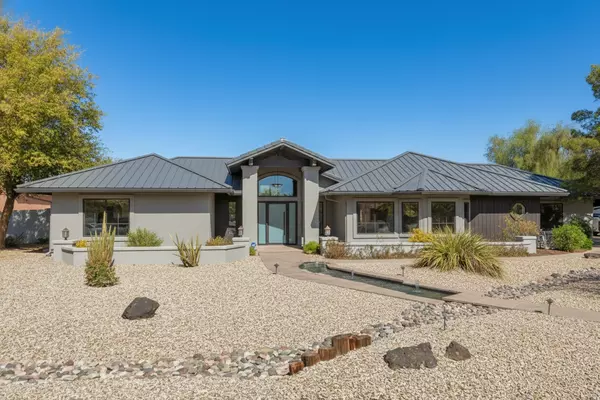How to Buy a New Home Before Selling: Bridge Loans, HELOCs, and Smart Real Estate Financing Strategies Explained

The idea of selling your current home before purchasing another one can feel overwhelming. The uncertainty of timing, market conditions, and financial juggling can create unnecessary stress for homeowners eager to move into their next dream home. But what if you didn’t have to wait? What if you could buy your next home before your current one is sold?
Thankfully, modern financing options like bridge loans make this possible, along with several other flexible alternatives. These solutions allow homeowners to make a seamless transition without worrying about selling their current home first. In this blog, I'll highlight how to buy a new home without waiting, focusing on bridge loans and other practical strategies.
What Is a Bridge Loan?
A bridge loan is a short-term loan that "bridges" the financial gap between purchasing a new home and selling your current property. This loan taps into the equity of your existing home, allowing you to make a down payment or even purchase your new home outright before your current home is sold.
Bridge loans are ideal for homeowners in competitive markets where the timing of selling and buying rarely lines up perfectly. This type of loan provides the financial flexibility needed to secure a new home while giving you time to properly market and sell your existing property.
Here’s how a bridge loan works:
- Equity-Based Borrowing: You can borrow against the equity you’ve built in your current home—usually up to 80% of your home’s value.
- Short-Term Financing: Bridge loans are typically short-term (6-12 months), giving you time to sell your home while managing the financing of your new property.
- Repayment Upon Sale: Once your existing home is sold, the proceeds from that sale are used to repay the bridge loan, closing out the loan’s balance.
Learn more about bridge loans and how they work.
Why Bridge Loans Are Beneficial
- No Need to Wait: One of the most significant advantages of a bridge loan is that you don’t need to wait to sell your home before buying a new one. You can act quickly in a hot market, locking down a new property without the pressure of immediately selling your current one.
- Stronger Buyer Position: By using a bridge loan, you can present a stronger offer to sellers. Offers that aren’t contingent on selling a current home are more attractive in competitive markets.
- Flexibility in Timing: A bridge loan buys you time. Rather than rushing to sell your home in less-than-ideal conditions, you can take the time to sell at a favorable price while already settling into your new place.
Bridge Loan Example 1: Out-of-State Move – San Diego to Phoenix
Scenario: A family relocating from San Diego to Phoenix for work seeks a home in the highly desirable Arcadia Lite neighborhood of Phoenix. However, the San Diego real estate market has slowed, and their current home isn’t selling as quickly as expected.
- Bridge Loan Amount: $250,000 (using the equity from their San Diego home)
- Interest Rate: 7.5%
- Loan Term: 12 months
How It Works: The family needed to secure a home in Phoenix quickly due to a job relocation. Since their San Diego home wasn’t selling immediately, they took out a $250,000 bridge loan to cover the down payment on their $700,000 Arcadia Lite home.
Calculating Interest Payment:
To calculate the interest for one year at a 7.5% interest rate:
Annual Interest=250,000×0.075=18,750
This means the total interest cost for holding the loan for 12 months would be $18,750.
Benefits:
- Quick Relocation: The bridge loan allowed the family to move to Phoenix immediately, without waiting for their San Diego home to sell.
- No Missed Opportunities: They secured a home in Arcadia Lite, avoiding the risk of losing it while waiting for their San Diego property to sell.
- No Financial Overlap: Once their San Diego home sold, they used the proceeds to pay off the bridge loan, eliminating financial overlap.
Bridge Loan Example 2: Local Move – Phoenix to Chandler, AZ
Scenario: A young professional couple living in a Phoenix townhouse wants to upgrade to a single-family home in Fulton Ranch, Chandler, due to a growing family and proximity to major tech employers.
- Bridge Loan Amount: $200,000
- Interest Rate: 7.5%
- Loan Term: 12 months
How It Works: The couple needed to move quickly but didn’t want to wait for their Phoenix townhouse to sell before purchasing their new $600,000 home in Chandler. They took out a $200,000 bridge loan to cover the down payment and strengthen their offer in Chandler’s competitive market.
Calculating Interest Payment:
To calculate the interest for one year at a 7.5% interest rate:
Annual Interest=200,000×0.075=15,000
This means the total interest cost for holding the loan for 12 months would be $15,000.
Benefits:
- Stronger Offer: With a bridge loan, the couple was able to make an offer on the Chandler home without including a sale contingency, making their bid more attractive to the seller.
- No Temporary Housing: They were able to move into their new home right away without worrying about selling their current property first or moving into temporary housing.
- Flexible Sale Timeline: The couple had the flexibility to sell their Phoenix townhouse at a favorable price instead of rushing the sale in a competitive market.
Other Solutions Beyond Bridge Loans
While bridge loans are a fantastic option, they aren’t the only way to buy before you sell. Depending on your financial situation and market conditions, you might find that alternative strategies work just as well—sometimes even better.
1. Home Equity Line of Credit (HELOC)
A Home Equity Line of Credit (HELOC) allows you to borrow against your current home’s equity, similar to a bridge loan. However, with a HELOC, you draw only the amount of money you need, which can make it more cost-effective. You only pay interest on the money you’ve borrowed, and the interest rates are usually lower than those of a bridge loan.
Check current HELOC rates and learn more.
Pros:
- Lower interest rates compared to bridge loans
- Flexible repayment based on how much you draw
- Can be used for various expenses, such as down payment or closing costs
Cons:
- Your home serves as collateral, meaning your equity is tied up until the loan is repaid
- Must qualify for both the HELOC and your new mortgage, which can be challenging depending on your debt-to-income ratio
HELOC Example: Goodyear, AZ
Scenario: A growing family is upgrading from a smaller Avondale home to a larger, newly built home in Estrella Mountain Ranch, Goodyear.
- HELOC Amount: $150,000
- Interest Rate: 6.5%
- Loan Term: 6 months
How It Works: The family used a HELOC to fund the down payment on their new home. The interest rate was 6.5%, and they only needed the HELOC for 6 months before selling their Avondale home.
Calculating Interest Payment:
To calculate the interest for six months at a 6.5% interest rate:
Annual Interest=150,000×0.065=9,750
Now, since they only needed the loan for six months:
The total interest cost for using the HELOC for six months would be $4,875.
Benefits:
- Lower Interest Rates: The HELOC’s interest rate is lower than a bridge loan, reducing overall borrowing costs.
- Flexible Borrowing: They only drew the amount they needed for the down payment, minimizing interest payments.
- No Rush to Sell: The family could sell their Avondale home on their timeline, potentially waiting for favorable market conditions.
2. Rent Out Your Current Home
Not ready to sell? Consider renting out your current home while you purchase another. This option can provide you with a stream of rental income that covers your mortgage or adds to your overall cash flow. By renting your home, you can avoid selling in a down market and hold onto your property for potential appreciation in the future.
Additionally, many lenders will consider rental income as part of your overall financial profile, which can help you qualify for a mortgage on your new home.
Pros:
- Create a stream of passive rental income
- Hold onto the home as a long-term investment
- Rental income can improve your debt-to-income ratio for qualifying for a second mortgage
Cons:
- Becoming a landlord comes with responsibilities and potential maintenance costs
- There is always a risk of vacancies or difficult tenants
Learn about rental income qualifications.
Rental Income Example: Buckeye, AZ
Scenario: A family owning a home in Seattle, WA, but looking to purchase a new property in Buckeye, AZ, due to job relocation.
- New Mortgage on Buckeye Home: $400,000
- Current 30-Year Fixed Mortgage Interest Rate: 5.75%
- Rental Income From Seattle Property: $3,000/month
How It Works: The family decided to rent out their Seattle home for $3,000 per month and use that income to cover the mortgage on their new home in Buckeye. Their new mortgage would have a 5.75% interest rate on a $400,000 loan.
Calculating Mortgage Payment:
Using a mortgage calculator for a 5.75% interest rate on a $400,000 loan, the estimated monthly payment for principal and interest would be $1,917.
Since their rental income is $3,000 per month, they have a positive cash flow:
Cash Flow= 3,000 − 1,917 = 1,083
This gives them $1,083 in monthly positive cash flow, which they can use for other expenses.
3. Contingent Sales or Flexibility Agreements
While many buyers and sellers prefer to avoid contingencies, they are still an option in certain circumstances. A contingent sale allows you to purchase your new home with the condition that the sale is dependent on selling your current property. This can be more challenging in competitive markets, but it’s worth exploring in specific situations.
Some developers or builders also offer flexibility agreements, where you can reserve a new home while giving yourself more time to sell your current property. This option is common in new construction, where you may need several months before moving into the new home.
Read more about contingent offers.
Pros:
- You’re not stuck paying two mortgages at the same time
- Gives you more time to sell your home without pressure
- Often works well with new construction timelines
Cons:
- Contingencies can weaken your offer in competitive markets
- May extend the overall timeline for your home purchase
4. Sale-Leaseback Arrangements
In a sale-leaseback arrangement, you sell your current home and then lease it back from the new owner for an agreed period. This allows you to access the proceeds from the sale of your home while continuing to live in it until you’re ready to move into your new property.
Sale-leasebacks are particularly beneficial in fast-moving markets where buyers are willing to give sellers the flexibility they need to find and move into their next home.
Pros:
- You get immediate equity from your home sale
- Avoid temporary housing solutions while transitioning between homes
- Flexibility in moving into your next home
Cons:
- Lease terms need to be negotiated, and not all buyers will be open to this arrangement
- You must commit to moving out by the lease’s end date
Learn more about sale-leaseback arrangements.
Sale-Leaseback Example: Scottsdale, AZ
Scenario: A retiree couple wants to downsize from their luxury North Scottsdale estate to a condo in Old Town Scottsdale.
- Sale Price of Home: $1,500,000
- Leaseback Rent: $6,000/month
- Total Leaseback Cost: $36,000 (for six months)
By selling their North Scottsdale home and leasing it back for six months, they accessed $1.5 million in equity and paid $36,000 in rent during the transition.
Comparative Table for Financing Options
Here’s a quick comparison of the options covered:
| Strategy | Interest Rate | Term | Pros | Cons |
|---|---|---|---|---|
| Bridge Loan | 7.5% | 6-12 months | Quick access to equity, no need to wait to sell | Higher interest rates, must be repaid quickly |
| HELOC | 6.5% | Varies (10-20 yrs) | Lower interest rates, flexibility in how much you borrow | Risk of tying up home equity, must qualify for new mortgage |
| Renting Out Home | N/A | Ongoing | Creates passive income, keeps the home as an investment | Management responsibilities, tenant risk |
| Sale-Leaseback | N/A | Negotiated term | Access equity while staying in home | Limited buyer flexibility, commitment to move out |
Final Thoughts: Make the Move Without the Wait
You don’t have to wait to sell your home before moving into your next one. With financing tools like bridge loans and other innovative strategies, homeowners can act quickly, seize opportunities, and avoid the stress of timing two significant transactions perfectly.
If you're ready to explore your options, reach out to discuss a tailored strategy that fits your needs!
Categories
- All Blogs (249)
- 13707 W Linanthus Road (3)
- 2223 N BEVERLY Place (5)
- Active Adult & 55 Plus Communities (12)
- Alamar (1)
- Anthem (3)
- Anthem Arizona (3)
- Arizona Relocation Guides (11)
- Avondale (2)
- Bridges at Gilbert (1)
- Buckeye Arizona (15)
- Builders (6)
- Builders in Avondale (1)
- Builders in Buckeye (1)
- Builders in Goodyear (1)
- Builders in Mesa (3)
- Builders in Peoria (2)
- Builders in Queen Creek (3)
- Builders in Scottsdale (3)
- Builders in Surprise (1)
- Buyers (155)
- Cadence (2)
- Cantamia (2)
- Chandler Arizona (6)
- Eastmark (2)
- Estrella (4)
- Financial Planning (35)
- Flagstaff Arizona (2)
- Fulton Ranch (1)
- General Real Estate (95)
- Gilbert Arizona (11)
- Glendale Arizona (7)
- Golf Course Communities (22)
- Goodyear Arizona (16)
- Guest Houses and ADUs (7)
- Income From Real Estate (33)
- Las Sendas (1)
- Litchfield Park Arizona (6)
- Maricopa Arizona (3)
- Market Update (17)
- Marley Park (3)
- Mesa Arizona (11)
- Military (5)
- Morrison Ranch (2)
- New Construction (22)
- New Construction Communities (22)
- News, Updates and Coming Soon (51)
- Norterra (1)
- Ocotillo (1)
- Palm Valley (7)
- Peoria Arizona (22)
- Phoenix Arizona (19)
- Power Ranch (2)
- Prescott Arizona (2)
- Queen Creek Arizona (4)
- REAL (8)
- Real Estate Agent Financial Planning (11)
- Real Estate Investing (56)
- Scottsdale Arizona (14)
- Sedona Arizona (1)
- Sellers (80)
- Senior Resources (14)
- Show Low Arizona (1)
- Spring Training (6)
- Sterling Grove (6)
- Sun City Arizona (2)
- Sun City Grand (1)
- Surprise Arizona (13)
- Tempe Arizona (4)
- Teravalis (1)
- Vacation Rental News (23)
- Verrado (14)
- Vistancia (11)
- Waddell Arizona (2)
- Waterston (1)
Recent Posts











About the Author
Eric Ravenscroft is a Top 1% REALTOR® across North America and one of Arizona’s most trusted real estate strategists. With 15 years of experience spanning real estate, wealth management, and investment planning, he helps clients make smarter, financially grounded decisions, from new construction and relocations to STR investments, 1031 exchanges, and long-term portfolio strategy.
Eric’s expertise has earned him industry recognition, Elite status with Real Broker, and features in major publications including the Wall Street Journal, MarketWatch, MSN, and Morningstar. Clients across the Greater Phoenix Metro rely on his clarity, strategic insight, and results-driven guidance.
Ready to make a confident real estate move? Call or text Eric today.
